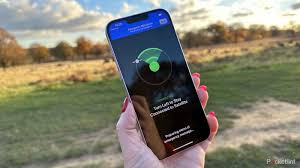 Peace Timi
Peace Timi
Smartphones in this era are indispensable tools, not just for communication and entertainment but also as lifesaving devices in emergencies. Equipped with features like flashlights and SOS functions, modern smartphones provide crucial support when you need it the most.
Here’s a guide on how to utilize these features effectively during emergencies.
The Flashlight Function
The flashlight function on your smartphone can be more than just a convenient tool for finding your keys in the dark. In emergency situations, it can be a beacon of safety.
1. Illumination in Dark Environments: When power outages occur or you find yourself in a poorly lit area, your smartphone’s flashlight can provide essential lighting. This can prevent accidents, help you navigate safely, and allow you to signal for help if needed.
2. Signaling for Help: The flashlight can also be used to signal for help. In case you’re lost or stranded, repeatedly flashing the light can attract the attention of rescuers or passersby. This method is especially useful in outdoor environments such as forests or mountains.
3. Conserving Battery Life: While the flashlight is invaluable, it’s important to use it judiciously to conserve your phone’s battery life. Lowering the brightness or using intermittent flashes instead of a continuous beam can help prolong battery usage.
SOS Functions
Many smartphones come equipped with SOS functions designed to provide quick access to emergency services and contacts. Here’s how to make the most of these features:
1. Emergency Call and Messaging: Most smartphones have an emergency call feature accessible even from the lock screen. This allows you to dial emergency services without unlocking your phone. Additionally, smartphones can be set up to send an SOS message to pre-selected contacts. This message often includes your location, giving rescuers critical information to find you quickly.
2. Location Sharing: Advanced SOS functions use your phone’s GPS to share your precise location. This is particularly useful if you’re in a remote area or moving, as it provides real-time updates on your whereabouts.
3. Medical Information Access: Some smartphones allow you to store medical information that can be accessed from the lock screen. This can include details such as blood type, allergies, and emergency contacts. In case you’re incapacitated, first responders can use this information to provide appropriate care.
Preparing Your Smartphone for Emergencies
To ensure your smartphone is ready to assist in an emergency, follow these preparation tips:
1. Keep Your Phone Charged: A fully charged phone is crucial in emergencies. Consider investing in a portable charger to keep your phone powered when you’re on the go.
2. Familiarize Yourself with Emergency Features: Take some time to explore and understand the emergency functions of your phone. Knowing how to quickly activate the flashlight, make an emergency call, or send an SOS message can save precious time during a crisis.
3. Update Emergency Contacts: Regularly update the emergency contacts in your phone. Ensure that these contacts are aware they are listed as emergency contacts and understand what to do if they receive an SOS message from you.
4. Install Emergency Apps: There are numerous apps designed to enhance your phone’s emergency capabilities. Apps like “Life360” or “Red Panic Button” provide additional tools for location sharing, emergency alerts, and more.
In emergency situations, your smartphone can be a powerful ally. The flashlight and SOS functions are designed to help you navigate, communicate, and get help when you need it the most. By understanding and preparing your phone’s emergency features, you can enhance your safety and be better equipped to handle unexpected situations. Remember, your smartphone is not just a communication device, it’s a lifeline.


